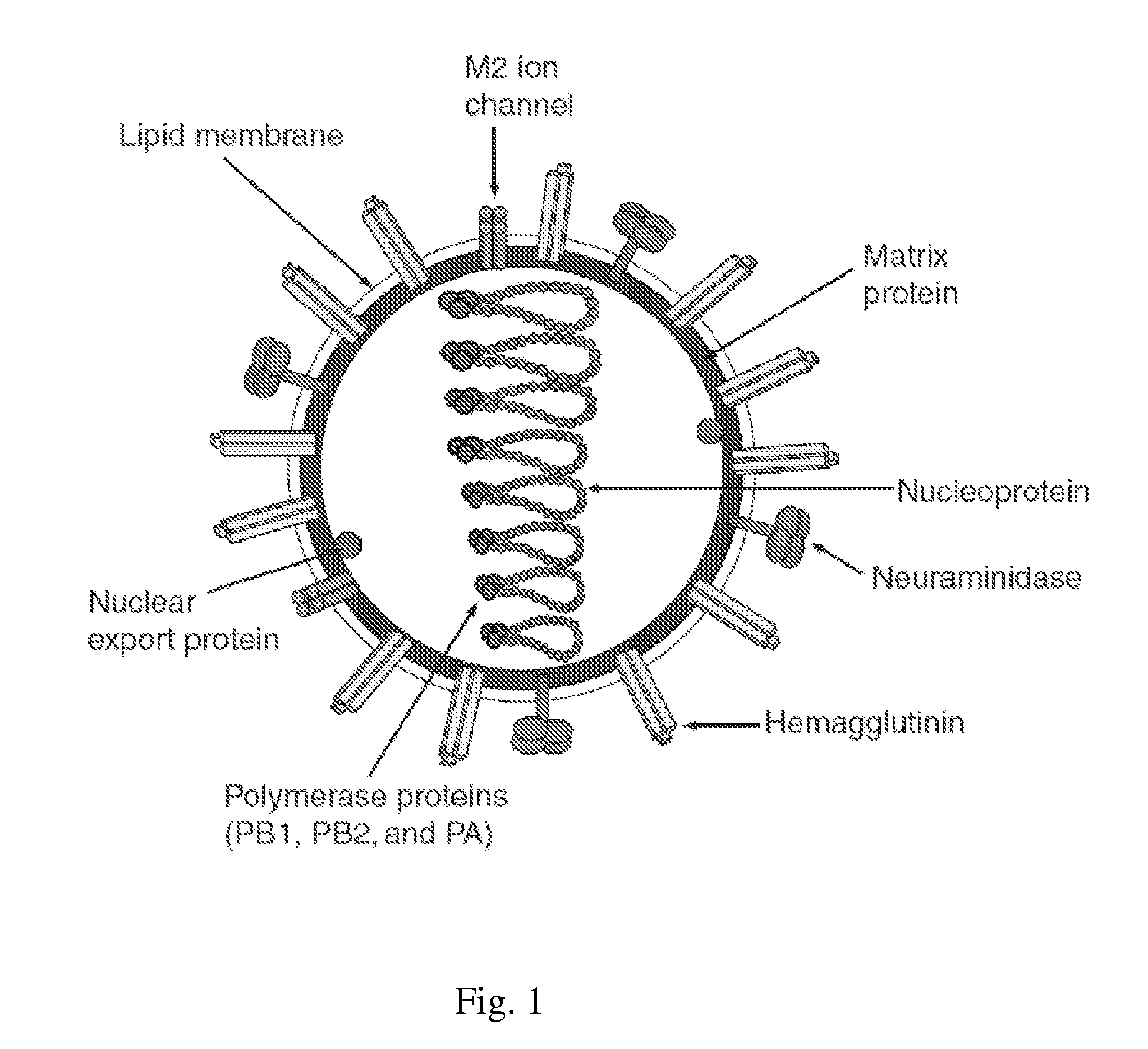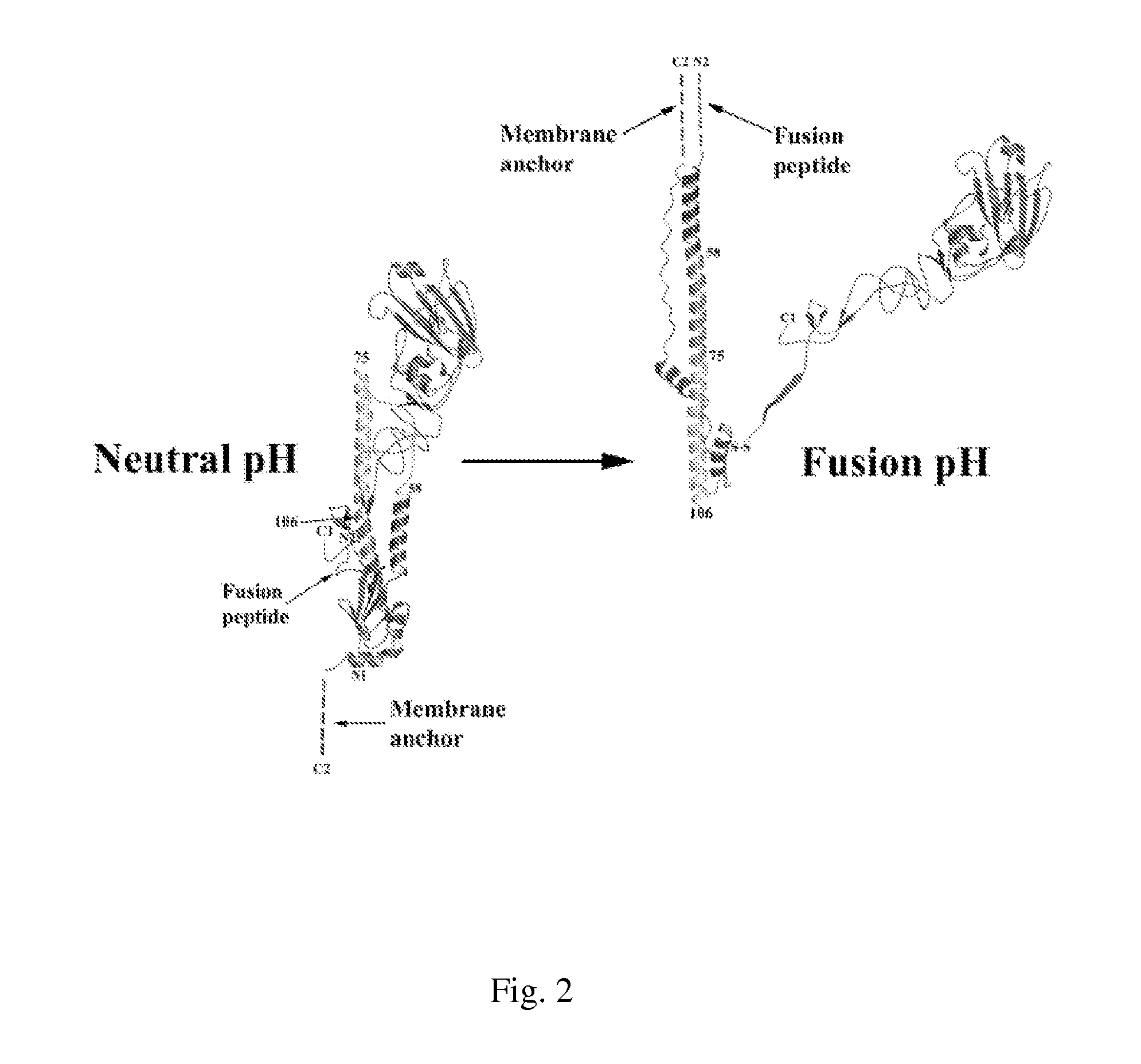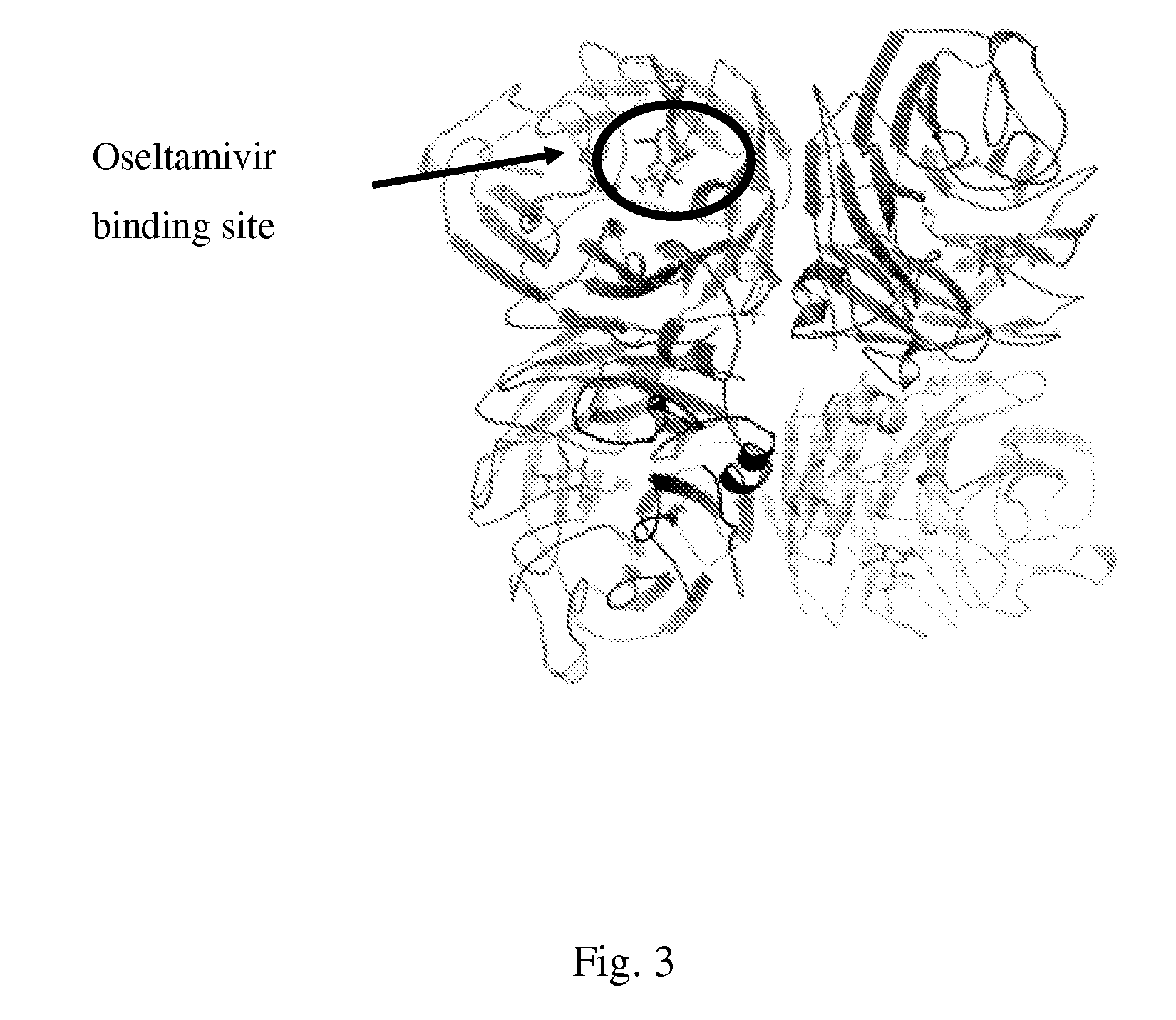4,5-Diamino-3-Halo-2-Hydroxybenzoic Acid Derivatives and Preparations Thereof
- Summary
- Abstract
- Description
- Claims
- Application Information
AI Technical Summary
Benefits of technology
Problems solved by technology
Method used
Image
Examples
example 1
Synthesis of methyl 4-amino-2-hydroxybenzoate (compound 1)
[0054]
[0055]To a solution of p-aminosalicyclic acid (15.3 g, 100.1 mmol) in anhydrous methanol (230 ml) was added concentrated H2SO4 (15 ml) slowly in an ice bath with magnetic stirring. The reaction mixture was refluxed for 48 h. After cooling to room temperature, the solvent was evaporated in vacuo. The resulting residue was basified with saturated NaHCO3 and extracted with ethyl acetate. The organic layer was then acidified with dilute HCl and extracted with water. The organic layer was dried over Na2SO4, filtered and concentrated to provide compound 1 (13.8 g, 86%) as brown powders.
[0056]Compound 1: Mwt: 167.16; Rf: 0.47 (ethyl acetate:hexane=1:2); 1H-NMR (DMSO-d6, 300 MHz) δ (ppm): 3.77 (3H, s, OCH3), 5.98 (1H, d, J=2.1 Hz, Ar H-3), 6.10 (1H, dd, J=6.6, 2.1 Hz, Ar H-5), 6.14 (2H, s, NH2), 7.43 (1H, d, J=8.7 Hz, Ar H-6), 10.76 (1H, s, OH).
example 2
Synthesis of 4-(acetamido)-2-hydroxybenzoic acid (compound 2a)
[0057]
[0058]To a solution of p-aminosalicyclic acid (15.3 g, 100.1 mmol) in anhydrous acetone (130 ml) was added acetic anhydride (10 ml, 105.8 mmol) in an ice bath with magnetic stirring. After being stirred for 24 h, the solvent was evaporated in vacuo, and the solid residue was washed with water and filtered to provide compound 2a (18.5 g, 95%) as white powders.
[0059]Compound 2a: Mwt: 195.17; Rf: 0.31 (dichloromethane:methanol=3:1). 1H-NMR (DMSO-d6, 300 MHz) δ (ppm): 2.05 (3H, s, CH3), 7.02 (1H, dd, J=6.9, 2.0 Hz, Ar H-5), 7.33 (1H, d, J=2.1 Hz, Ar H-3), 7.68 (1H, d, J=8.7 Hz, Ar H-6), 10.18 (1H, s, ArNH), 11.34 (1H, s, OH).
example 3
Synthesis of methyl 4-(acetamido)-2-hydroxybenzoate (compound 2b)
[0060]
[0061]To a solution of compound 1b (2.46 g, 15.3 mmol) in anhydrous acetone (25 ml) was added acetic anhydride (3 ml, 31.7 mmol) in an ice bath with magnetic stirring. After being stirred for 19 h, the solvent was evaporated in vacuo, and the solid residue was washed with water and filtered to provide compound 2b (2.74 g, 86%) as white powders.
[0062]Compound 2b: Mwt: 209.20; Rf: 0.50 (ethyl acetate:hexane=1:1). 1H-NMR (DMSO-d6, 300 MHz) δ (ppm): 2.06 (3H, s, CH3), 3.85 (3H, s, OCH3), 7.04 (1H, dd, J=6.6, 2.1 Hz, Ar H-5), 7.37 (1H, d, J=1.8 Hz, Ar H-3), 7.70 (1H, d, J=8.7 Hz, Ar H-6), 10.22 (1H, s, ArNH), 10.6 (1H, s, OH).
PUM
| Property | Measurement | Unit |
|---|---|---|
| Fraction | aaaaa | aaaaa |
| Fraction | aaaaa | aaaaa |
| Fraction | aaaaa | aaaaa |
Abstract
Description
Claims
Application Information
 Login to View More
Login to View More - R&D
- Intellectual Property
- Life Sciences
- Materials
- Tech Scout
- Unparalleled Data Quality
- Higher Quality Content
- 60% Fewer Hallucinations
Browse by: Latest US Patents, China's latest patents, Technical Efficacy Thesaurus, Application Domain, Technology Topic, Popular Technical Reports.
© 2025 PatSnap. All rights reserved.Legal|Privacy policy|Modern Slavery Act Transparency Statement|Sitemap|About US| Contact US: help@patsnap.com



